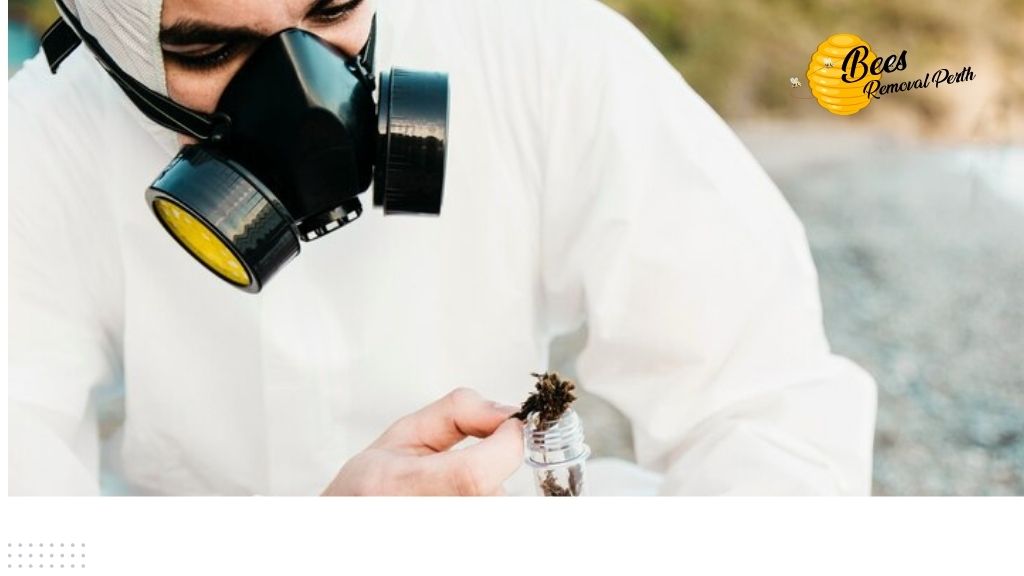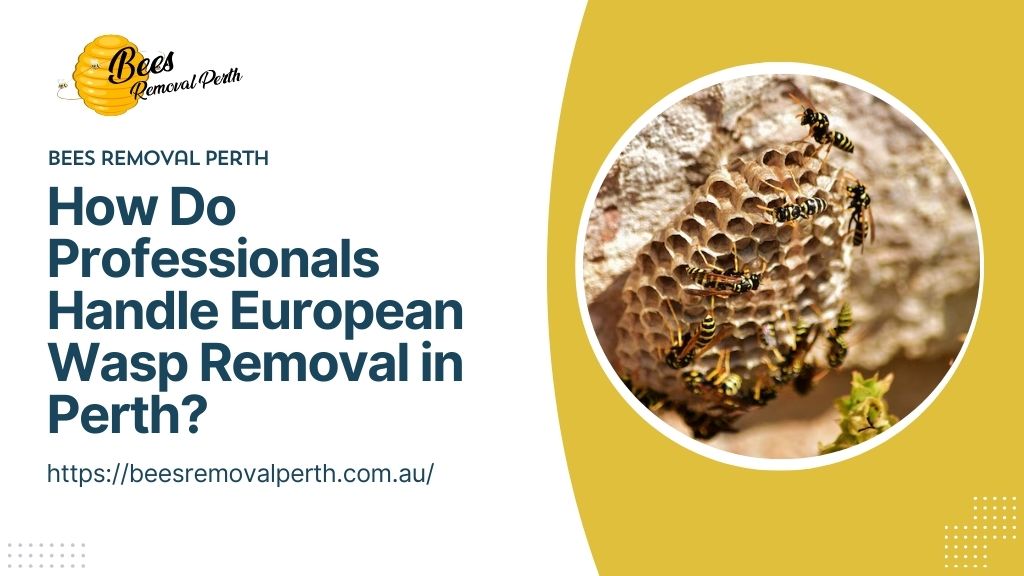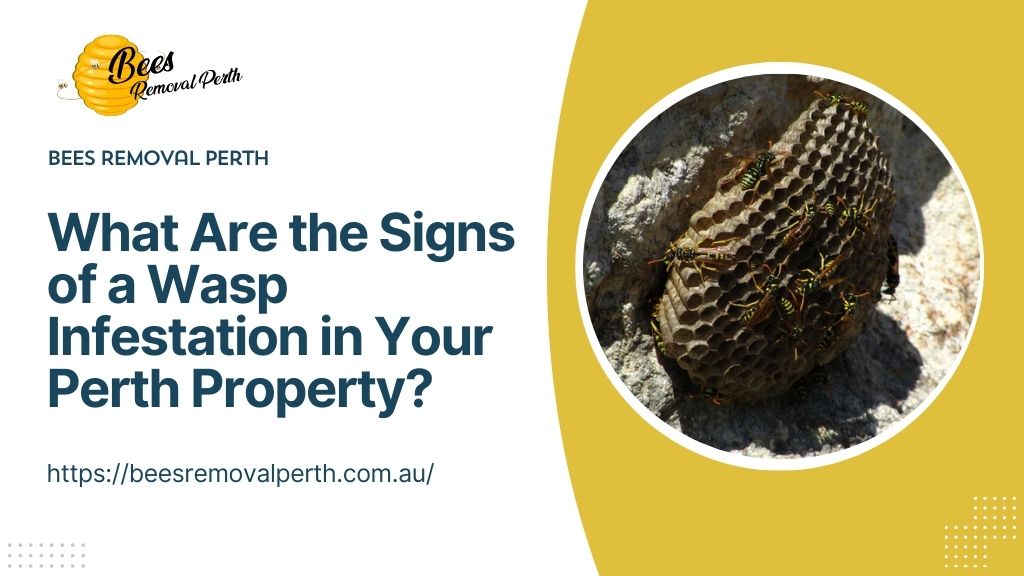European wasps are becoming a growing problem across Perth, especially during the warmer months. These aggressive pests can build large nests near homes and outdoor areas, putting people at risk of painful stings and even allergic reactions.
In fact, recent data shows European wasps are responsible for hundreds of pest reports in Western Australia each year. Unlike native wasps, they’re more likely to attack if they feel threatened. Because of this, proper removal requires more than just a spray can and some bravery.
Professional pest control teams follow a safe and proven process to handle these wasps and prevent them from coming back. This article explains exactly how the experts do it—step by step—so you can understand what’s involved and why it’s the safest way to deal with the problem.
What Are European Wasps and Why Are They a Problem in Perth?
European wasps (Vespula germanica) are an aggressive, invasive pest species originally from Europe. They’re about the size of a honeybee but have a slimmer body with bright yellow and black bands, giving them a more “shiny” look. Unlike bees, they can sting multiple times without dying, which makes them more dangerous when disturbed.
These wasps are a problem in Perth because they compete with native insects and can become aggressive around food, rubbish, and outdoor gatherings. They often build nests in walls, roof spaces, trees, and even underground.
European wasps are most active in late summer and early autumn. Their stings can cause swelling, pain, and in some cases, severe allergic reactions. Because of their aggressive behaviour and nesting habits, they pose a real safety concern, especially in residential areas and public parks.
If you notice increased wasp activity or suspect a nest nearby, it’s essential to act quickly. For safe and effective solutions, it’s best to contact professionals experienced in bee removal Perth residents trust for handling both bees and wasps.
Signs of a European Wasp Infestation
One of the first signs of a European wasp infestation is seeing the wasps often, especially around food, bins, or pet bowls. You might notice several flying in and out of the same spot, which could be the nest entrance. A steady buzzing sound, like a loud hum, may also be heard near walls or ceilings if the nest is inside.
These wasps often build nests in hidden, sheltered spots. Common places include roof cavities, wall voids, garden sheds, tree hollows, and even underground. Nests can grow quickly and house thousands of wasps.
If you see regular wasp activity or spot a nest, it’s time to call a licensed pest control expert. Acting early helps prevent the wasps from spreading or becoming more aggressive.
Why DIY Wasp Removal Is Not Recommended
Trying to remove a European wasp nest without proper training can be dangerous. These wasps can become aggressive if disturbed, and since they can sting multiple times, it’s easy to get hurt—especially without protective gear. Serious allergic reactions can also happen, even if you’ve never been stung before.
There are also legal and environmental issues. In WA, using unapproved chemicals or disturbing nests without the right approach may go against safety regulations. Homeowners often make mistakes like blocking nest entrances or using the wrong sprays, which can make the problem worse.
To stay safe and avoid long-term issues, it’s always better to leave wasp removal to trained professionals.
How Professionals Remove European Wasps in Perth
Site Inspection and Nest Identification
Before starting any treatment, professionals inspect the area to find all signs of wasp activity. They wear protective suits, gloves, and face shields to avoid stings.
Using tools like thermal cameras or long-reach poles, they safely locate the nest—even if it’s hidden in a wall, roof, or underground. They also check how active the nest is, how big it’s grown, and how close it is to people or pets. This helps them plan the safest way to remove it without causing panic or spreading the wasps elsewhere.
A careful inspection is the first step to removing the nest completely and safely.
Choosing the Right Treatment Method
Once the nest is found, the pest control expert chooses the best way to treat it. This depends on the nest’s size, location, and level of activity. Professionals often use approved insecticidal dusts or aerosols made for wasp removal.
These chemicals are strong enough to kill the colony but safe enough to use around homes when applied correctly. In some cases, eco-conscious products are used to reduce harm to other insects and the environment.
The goal is to treat the nest in a way that targets the whole colony while keeping the area safe for families and pets.
Safe Nest Removal and Disposal
Professionals usually remove nests in the evening or early morning when wasps are less active. This reduces the chance of getting swarmed and keeps the job safer.
After treating the nest, they carefully remove it, sealing it in a secure container. This step is important because even treated nests can still hold live wasps.
Once the nest is taken away, the area is checked to make sure no wasps are left behind. This helps prevent new colonies from forming in the same place, giving you peace of mind that the problem is fully handled.
Post-Treatment Monitoring
After the nest is removed, professionals may return for follow-up checks to ensure the wasps are completely gone. They’ll inspect the treated area and nearby spots to confirm there’s no remaining activity.
If needed, a second treatment may be done to stop any survivors. Experts also give advice on how to prevent future infestations, such as sealing cracks, covering bins, and avoiding food left outside.
Monitoring the area after treatment helps ensure your home stays wasp-free and safe, especially during peak seasons when European wasps are most active.
Preventative Measures for Homeowners

Preventing European wasps from settling near your home starts with a few simple habits. First, keep an eye out during warmer months. Regularly check around roof edges, wall gaps, garden sheds, and outdoor furniture for early signs of nests. Catching them early can make a big difference.
Seal any cracks or holes in walls, eaves, and roof tiles to block common nesting spots. Wasps are also drawn to food scraps, sugary drinks, and pet food—so always cover bins tightly and clean up spills right away.
Some landscaping choices help too. Avoid planting too many sweet-smelling flowers near entryways, and trim overgrown bushes or trees where nests might form. Small changes can help keep your outdoor areas wasp-free and safe.
Choosing the Right Wasp Removal Service in Perth
Finding the right wasp removal service in Perth is important for both safety and long-term results. Always choose a licensed pest control professional who has the right training and equipment. Check that they’re certified to handle wasp chemicals and follow safety standards.
Local experience also matters. A Perth-based expert will know how European wasps behave in your area and the best ways to deal with them. They’ll also be familiar with local laws and environmental guidelines.
Costs can vary, but most treatments range from $150 to $300, depending on nest size and location. A good company should also offer a service guarantee in case the wasps return. Always ask about follow-up support before booking.
FAQs About European Wasp Removal
Can I remove a nest myself?
It’s strongly recommended that you don’t try to remove a European wasp nest on your own. These wasps can be very aggressive, and disturbing the nest could lead to multiple stings or serious allergic reactions. Always contact a licensed pest control expert to stay safe.
Are wasps active all year in WA?
No, European wasps are usually most active from late spring through autumn. They build their nests during the warmer months and die off in winter, though queens may survive to start new colonies.
How long does removal take?
Most professional removals take under an hour. However, large or hard-to-reach nests may need follow-up visits to ensure full elimination.
Is the treatment safe for pets and kids?
Yes, when applied by trained professionals, the treatments are safe. Experts use approved products and take care to protect children, pets, and the environment.
Conclusion
European wasps can cause serious problems if left untreated, especially in Perth where they’re becoming more common. Their aggressive nature and painful stings make it important to deal with them the right way. Professional removal is the safest option, as experts have the knowledge, tools, and safety gear needed to handle nests properly.
Trying to fix the problem yourself can be risky and may make things worse. That’s why it’s better to act quickly and contact a licensed pest control service if you spot signs of a nest. Local experts understand how these wasps behave and how to fully get rid of them.
By learning how professionals handle wasp removal, you’ll be better prepared to deal with a problem before it grows. If you’re unsure whether you have an issue, get a free wasp inspection in Perth today. Keep reading the blog for helpful tips on prevention, treatment, and staying wasp-free.

